بسم الله الرحمن الرحيم
27, Jumad al-Aakhir, 1444 AH (Friday, 20, January, 2023)
Books of ‘Allāmah Ibn aṣ-Ṣalāh
‘Allāmah Ibn aṣ-Ṣalāḥ was an erudite author who wrote many prolific books. ‘Allāmah Ibn Kathīr said:
وقد صنف كتبا كثيرة مفيدة في علوم الحديث وفي الفقه، وتعاليق حسنة على ” الوسيط ” وغيره من الفوائد التي يرحل إليها. (البداية والنهاية – 17 / 282)
Hereunder is the list of the books that he authored:
Books that are printed
1. Ma’rifah Anwā’ ‘Ilm al-Ḥadīth (We will discuss about this in detail)
2. Adab al-Muftī wa ‘l-Mustaftī – This has been printed:
- With the name Kitāb al-Fatwā wa Ikhtilāf al-Qawlayn wa ‘l-Wajhayn. This is with the taḥqīq of Muṣṭafā Maḥmūd al-Azharī. It was published by Dār ibn al-Qayyim.
- With the taḥqīq of Abdullāh ibn ʿAbd al-Qādir, over 215 pages, published by Maktabat al-ʿUlūm al-Ḥikam.
3) Ṣilat al-Nāsik fī Ṣifat al-Manāsik – printed with the taḥqīq of ʿAbd al-Karīm al-ʿUmarī. This comprises of 458 pages and is published by Jāmiʿat al-Islāmiyyah in Madīnah Munawwarah.
4) Ṭabaqāt al-Fuqahā’ al-Shāfiʿīyyah – printed with the taḥqīq of Muḥyī al-Dīn ʿAlī Najīb, with 1100 pages in 2 volumes, published by Dār al-Bashā’ir al-Islāmiyyah. (1)
5) Sharḥ Mushkil al-Wasīṭ – printed with the taḥqīq of two students – ʿAbd al-Munʿim Khalīfah Aḥmad Bilāl and Muḥammad Bilāl ibn Muḥammad Amīn, in 4 volumes, published by Dār al-Kunūz.
6) Al-Anwār al-Lum‘ah Fī ‘l-Jam’ bayn al-Mufradāt as-Ṣiḥāḥ as-Sab‘ah. It is printed in four volumes with the taḥqīq of of Sayyid Kushrawī Ḥuṣayn. It was published by Dār al-Kutub al-‘Ilmiyyah.
7) Ḥilyat Imām ash-Shāfi’ī – printed with the taḥqīq of Bassām al-Jābī, and published by Dār al-Baṣāir.
8) Masā’il ibn aṣ-Ṣalāḥ (in tafsīr, ḥadīth, uṣūl, fiqh etc) – printed with the taḥqīq of ʿAbd al-Muʿṭī Amīn, comprising of 866 pages, published by Dār al-Maʿrifah.
9) Risālah Fī Waṣl al-Balāghāt al-Araba’ah Fī ‘l-Muwaṭṭa (published in the Khams Rasā’il, with the taḥqīq of Shaykh ‘Abdul Fattāḥ Abū Ghuddah / also published separately by others)
10) Ḥukm Ṣalāh ar-Raghā’ib (I am told that it is published)
11) Ṣiyānat Ṣaḥīḥ Muslim min al-Ikhlāl wa ‘l-Ghalaṭ wa ḥimāyatuhu min al-Isqāṭ wa Saqaṭ– printed with the taḥqīq of Shaykh Muwaffaq ibn ʿAbdullāh ibn ʿAbd al-Qādir, in 343 pages, published by Dār Gharb al-Islāmī.
12) Ḥawāshī on Sunan al-Kabīr of Imām Bayhaqī. It is published with the Kitāb.
13) Ta’līqāt ‘alā Ma’rifat ‘Ulūm al-Ḥadīth li ‘l-Ḥākim – This is printed with Ma’rifat ‘Ulūm al-Ḥadīth of Imām Ḥākim (the edition of Aḥmad Fāris, printed by Maktabat al-Ma’ārif) This is incomplete.
Works in Manuscript Form / Makhṭūṭāt
1) Fawā’id al-Riḥlah
2) An-Nukat al-Muhadhdhab
3) Al-Aḥādīth al-Musnadah Fī Faḍl al-Iskandariyyah wa ‘Asqalān
4) Al-Mu’talif wa ‘l-Mukhtalif fī Asmā ar-Rijāl
5) Tārikh an-Nabī ﷺ
6) Al-Aḥādīth al-Kulliyyat allatī ‘Alayhā Madār al-Dīn
7) Ḥawāshī Maṭāliʿ al-Anwār
8) Al-Istidrāk ‘alā Kitāb al-Istī‘āb
9) Mukhtaṣar Fī Aḥādīth al-Aḥkām
10) Mushkilāt al-Bukhārī
11) Dalīl anna ‘l-Basmalah min al-Fātiḥah wa ‘l-Jahr bih
Books that I am unaware whether Manuscripts have been found
1) Juz Ḥadīthi (Ibn Fahd attributed this treatise to him in his Mu‘jam ash-Shuyūkh, page 205)
2) At-Taḥrīr (The following scholars attributed this book to him:
- Abnāsī (ash-Shadal Fayyāḥ, 2/537)
- ‘Irāqī (at-Taqyīd wal ‘Īḍāḥ 2/992)
- Abū Zur’ah Irāqī (Tuḥfah at-Taḥṣīl, p 322)
3) Ta’līqah ‘alā Sharḥ al-Wasāil li ‘l-Ghazālī (Ismā‘īl Bāshā attributed this to him in Hadiyyat al-‘Ārifīn, 1 / 654)
4) Majmū’ (Subkī attributed this to him in Ṭabaqāt al-Kubrā, (2 / 305) (1)
Besides these, he gathered selected points (Muqtabasāt) from numerous other books, and they could be considered as independent books.
The aforementioned is sufficient to illustrate that he was a prolific author with numerous brilliant books to his name. Hence, Imām an-Nawawī describes him saying:
ذي التصانيف الحميدة والمؤلفات المفيدة. (إرشاد طلاب الحقائق إلى معرفة سنن خير الخلائق صلى الله عليه وسلم – ص : 54)
This Book On ‘Ulūm al-Ḥadīth
‘Allāmah Ibn aṣ-Ṣalāḥ was appointed as the first professor of Ḥadīth at the university of Ḥadīth, Dār al-Ḥadīth Ashrafiyyah. ‘Allāmah Ibn Khalliqān said:
ولما بنى الملك الأشرف ابن الملك العادل بن أيوب رحمه الله تعالى: دار الحديث بدمشق فوض تدريسها إليه. واشتغل الناس عليه بالحديث (وفيات الأعيان – 3 / 244)
Upon being appointed as the leading teacher at this institute, he realized that there is no good book to put in the syllabus. He thus felt that it is best that he makes his own notes and teach from there. This was then compiled into a book.
When we study his life and the methodology of the book, and also considering the way the early scholars described his book (you probably read description that Ḥāfiẓ Ibn Ḥajar gave in the introduction of Nuzha), we can conclude that he possibility must have noticed and considered a few factors:
- The classical books all have chains of transmission. This will make it too difficult for a student.
- The information that is needed for a beginner is scattered in different chapters of the book. The reader will have to go through a lot to find the basics.
- Even worse, the information is actually scattered in different works. This will require a lot of effort for his intended audience.
- Due to contradictory rulings and statements in the different books, it might lead to a lot of confusion.
- Many principles do not have titles or set terminology. He would need to invent appropriate terms.
- There are few additional principles that need to be made, so that everything can conform into categories with set terminologies and appropriate rulings.
- In his era, people were losing interest in studying Ḥadīth. For this, he felt that it would be best to refine the science and present everything on a golden platter.
Therefore, he decided to dictate his own notes, and that is what led to the writing of this book. ‘Allāmah Ibn Kathīr said:
وهو أول من وليها من شيوخ الحديث، وهو الذي صنف كتاب وقفها. (البداية والنهاية – 17 / 282)
Ḥāfiẓ Ibn Ḥajar says:
[فجمع] لما ولي تدريس الحديث بالمدرسة الأشرفية – كتابه المشهور فهذب فنونه وأملاه شيئا بعد شيء. (نزهة )النظر في توضيح نخبة الفكر – ص: 6)
Shaykh ‘Abdul Fattāḥ Abū Ghuddah writes that he actually taught this whilst teaching As-Sunan al-Kubrā of Imām Bayhaqī. He wrote:
ألفه أثناء قرائته كتاب السنن الكبرى (تعليقه على ظفر الأماني – ص: 558)
In order for the students to properly understand this book, he realized that they need to learn basic nomenclature of earlier scholars and the applicable rules and principles. Meaning; they can only derive proper benefit from Sunan al-Kubrā if they know Uṣūl al-Ḥadīth. That motivated him to compile these notes and dictate them to the students.
Allāmah Ibn aṣ-Ṣalāḥ’s (may Allāh Ta’ālā have mercy on him) lessons commenced on the 7th of Ramaḍān, 630 AH and concluded on the last day of Muḥarram, 634 AH. It took just over 40 months to complete all of the lessons. This duration (of 40 months) is proven from the manuscript of Ḥāfiẓ Aḥmad ibn al-‘Irāqī (may Allāh Ta’ālā have mercy on him). It is written at the end of the manuscript in the handwriting of Muḥammad ibn Aḥmand ibn al-Khaḍir, who is also known as Ibn Rīsh:
فرغ مصنفه من تصنيفه وإملائه بين صلاتي يوم الجمعة، آخر المحرم من سنة أربع وثلاثين وستمائة، سوى ما بعد الحمدلة من صفة الكتاب، فإنه أملاه يوم الأحد ثاني صفر، وهذا خطه عفا الله عنه وعن والديه والمسلمين أجمعين، وأفازه في كتابه كما أفاز جلة الفائزين بمثله من قبل. أمين أمين أمين.
أملاه أجمع بدار الحديث الملكية الأشرفية، غفر الله لواقفها ولوالديه في مدة تخللتها فترات، صادف أولها يوم الجمعة السابع من شهر رمضان سنة ثلاثين وستمائة وأخرها يوم الجمعة المذكور قبيل، وكان فتح الدار للتحديث وأول مجلس حدث مؤلفه بها فيه أول شهر رمضان المذكور ولله الحمد كله، ومنه الخير كله، وله الكمال كله
In the notes of the previous lesson, we mentioned the various places that ‘Allāmah Ibn aṣ-Ṣalāh travelled to and the sheer number and prolific calibre of the scholars he met. He finally came to settle down in Damascus. In the year 630 AH, he was already 53 years old, and he had all this experience behind his name. By this time, he was an expert in this science, and one of the greatest scholars of Ḥadīth in his era. Therefore, this was the perfect time for him to commence with this book.
The Name of the Kitāb
The first step in getting insight on what this book is about is to get to know the real name of the book. For this, we refer to the earliest manuscripts that are at our disposal.
When going through these manuscripts which were read to the author, we notice very clearly that the name of this book is:
Ma’rifah Anwā’ ilm al-Ḥadīth, wa bayān Uṣūlih wa Qawā’idih, wa Īḍāḥ Furū’ih wa Aḥkāmih, wa kashf Asrāruh, wa Sharḥ Mushkilātih, wa Ibrāz Nukatih wa farāidih, wa Ibānat Muṣṭalaḥāt Ahl al-Ḥadith, wa Rusūmihim wa Ma’ālimihim, wa Maqāṣidim
To illustrate and prove this, we hereunder reproduce a few images of the various manuscripts:
1) First manuscript read to the author
Place preserved: Dār al-Kutub al-Baladiyya, in Alexandria, Egypt
Number: 1964 D
Date transcribed: 634
Status: Read directly to the author.
.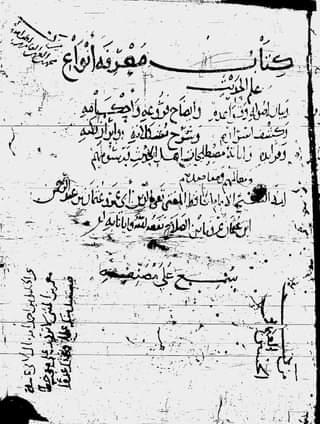
Comment: The full name quoted above is quite clear, although there are a few places of fading, due to the passing of time.
2) The manuscript of Ibn al-Muhtār – Yūsuf ibn Muḥammad ibn ‘Abdillāh ad-Dimashqī (d. 685). This manuscript was read to ‘Allāmah Ibn aṣ-Ṣalāḥ on many occasions.
Place preserved: Rāgib Bāshā, Turkey
Number: 243
Date transcribed: 636 AH
Status: Read directly to the author on numerous occasions.
Comment: The full name quoted above is very clear.
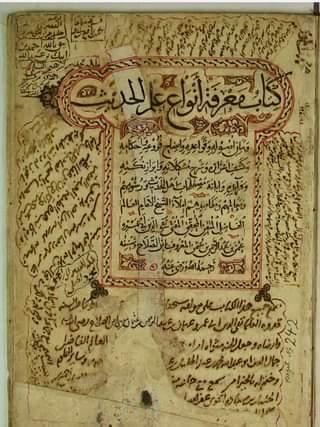
3) A manuscript written just before the demise of the author
Place preserved: Muradmolla, Turkey
Number: 322
Date transcribed: 641 AH
Status: Copied directly from the copy of the author.
Comment: The full name quoted above is very legible, with a few places of fading, due to the passing of time.
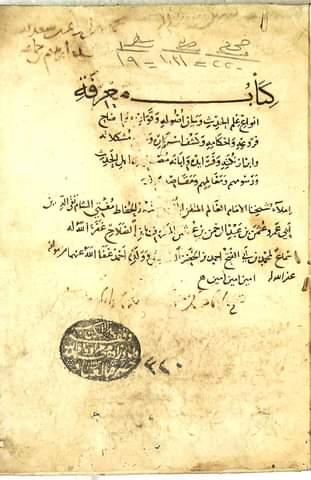
4) The copy of ‘Abd al-Kāfī ibn ‘Abd al-Malik ibn ‘Abd al-Kāfī ar-Raba’ī (d. 689 AH)
Place preserved: Koprulu Kutuphanesi, Turkey
Number: 218
Date transcribed: 641 AH
Status: Copied directly from the copy of the author.
Comment: The full name quoted above is quite explicit, with a few places of fading, due to the passing of time.
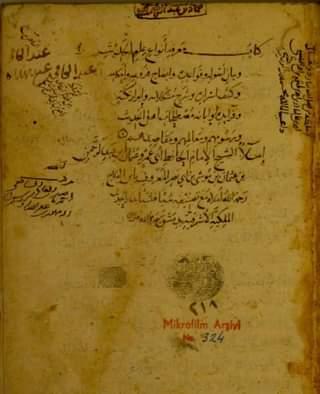
5) Example of the next century.
Place preserved: Dār al-Kutub al-Miṣriyyah, Turkey
Number: 155 Muṣṭalaḥ Ḥadīth
Date transcribed: 713 AH
Comment: The full name quoted above is clear, with a few places of fading, due to the passing of time.
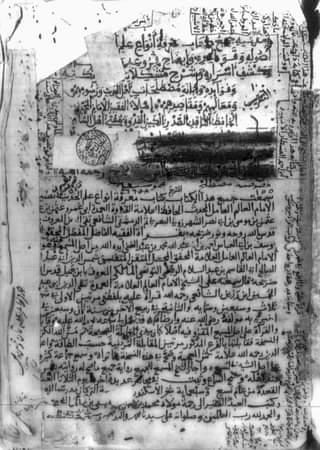
Method of The Author Referencing to The Book
From the aforementioned, it is apparent that the author named his book with a title that is rather lengthy. It would hence not be possible to constantly mention the lengthy name when referencing or indicating to this book. Therefore, he uses shorter names to cite or mention this book.
When referring to this book in the introduction, he mentions the first portion of the lengthy name. He writes:
…..وله الحمد أجمع، بكتاب ” معرفة أنواع علم الحديث “. (مقدمة ابن الصلاح – ص: 6)
Prior to his death, he commenced writing the book: Ṣiyānat Ṣaḥīḥ Muslim (a commentary of Ṣaḥīḥ Muslim). In this book, he takes the first portion of the name, removes a word from it, and changes one word. From Ma’rifah Anwā’ ‘ilm al-Ḥadīth, he alters it to: Ma’rifah ‘Ulūm al-Ḥadīth.
Kindly find hereunder some examples:
1) He says:
وقد أجبت عليهما بجوابين أحدهما ما ذكرته في كتاب معرفة علوم الحديث (صيانة صحيح مسلم – ص: 75)
“And I answered them both with two answers, one of which is what I mentioned in the book, Ma’rifah Ulūm al-Ḥadīth.” (Ṣiyānat Ṣaḥīḥ Muslim, page: 75)
2) A few pages later, he says:
وقد قررنا في كتاب معرفة علوم الحديث أنه إذا تحقق اللقاء والسماع مع السلامة من التدليس…الخ (صيانة صحيح مسلم – ص: 83)
“And we have established in the book, Ma’rifah Ulūm al-Ḥadīth, that if the meeting and hearing is ascertained with soundness from Tadlīs (where a narrator did not hear from the link above him, but he tries to give the impression that he heard from the link above using ambiguous words)…” (Ṣiyānat Ṣaḥīḥ Muslim, page: 83)
3) At another place, he mentions:
وقد جليت في كتاب معرفة علوم الحديث حمل الخطيب أبي بكر الحافظ على ذلك احتجاج صاحبي الصحيحين وأبي داود وغيرهم (صيانة صحيح مسلم – ص: 96)
“And I made it clear in the book, Ma’rifah Ulūm al-Ḥadīth, that Al-Khaṭīb Abī Bakr al-Ḥāfiẓ considered that to be a basis for Imām Bukhāri, Imām Muslim, and Abū Dawūd, and others quoting narrations from those upon whom there were objections.” (Ṣiyānat Ṣaḥīḥ Muslim, page: 96)
4) Later he says:
وقد ذكرت في كتابي معرفة علوم الحديث عن بعض الحفاظ أن شعبة روى عن سبعة كلهم. (صيانة صحيح مسلم – ص: 149)
5) Again at another place he says:
وقد بينت المسألة في كتاب معرفة علوم الحديث. (صيانة صحيح مسلم – ص: 163)
At the above five places, he used the same name: Ma’rifat ‘Ulūm al-Ḥadīth.
However, at a sixth place – the last place to refer to the book before he passed away – he referred to it differently:
وكان أبو هريرة يلحق معهن على ما عرف مثله في نوع المدرج الذي بيناه في كتابنا في أنواع علوم الحديث. (صيانة صحيح مسلم – ص: 227)
But it is clear that he is not referencing the book. Rather, he is simply indicating to the book.
How Earlier Scholars Referred to the Book
In his abridgement of his first summary of the authors book, Imām Nawawī referred to this book as: Ma’rifat ‘Ulūm al-Ḥadīth:
وهذا كتاب أختصر فيه إن شاء الله الكريم الرؤوف الرحيم – معرفة علوم الحديث. (إرشاد طلاب الحقائق إلى معرفة سنن خير الخلائق صلى الله عليه وسلم – ص: 54)
Many scholars simply sufficed by referring to the book as: ʿUlūm al-Ḥadīth. Hereunder we will suffice by simply quoting from a few.
1) In at-Taqrīb wat-Taysīr (the abridgement of the above-mentioned summary), Imām Nawawī himself simply referred to it as ‘Ulūm al-Ḥadīth. He wrote:
وهذا كتاب اختصرته من كتاب ” الإرشاد ” الذي اختصرته من علوم الحديث للشيخ الإمام الحافظ المتقن المحقق أبي عمرو عثمان بن عبد الرحمن المعروف بابن الصلاح رضي الله عنه. (التقريب والتيسير للنووي – ص: 23)
2) ‘Allāmah Dhahabī refers to the book as: ‘Ulūm al-Ḥadīth. He wrote:
صاحب علوم الحديث. )سير أعلام النبلاء – 23 / 140)
3) ‘Allāmah Ibn Kathīr wrote the name of his summary: Ikhtiṣār ‘Ulūm al-Ḥadīth
4) In at-Taqyīd wa ‘l-Īḍāḥ, ‘Allāmah ‘Irāqī refers to it:
فإن أحسن ما صنف أهل الحديث في معرفة إلاصطلاح كتاب علوم الحديث لابن الصلاح. (التقييد والإيضاح شرح مقدمة ابن الصلاح – ص: 29)
Thus ʿAllāmah Taqī al-Dīn al-Dijwī and ʿAllāmah ʿIrāqī, when they were giving ijāzah for the book (as mentioned by Shaykh Nūr al-Dīn ʿIṭr in the muqaddimah), both of them call the book ʿUlūm al-Ḥadīth.
5) At numerous place in Kashf al-Ẓunūn, Haji Khalifah also calls the book ʿUlūm al-Ḥadīth. Under the entry of the book, he wrote:
علوم الحديث :كتاب لأبي عمرو: عثمان بن عبد الرحمن المعروف: بابن الصلاح الشهرزوري الحافظ الشافعي الدمشقي. (كشف الظنون عن أسامي الكتب والفنون – 2 / 1162)
6) Muḥammad ibn Sulaymān Rawdānī called the kitab: ʿUlūm al-Ḥadīth in his kitab: Ṣilat al-Qalb bi Mawṣūl al-Salaf:
كتاب النكت علي علوم الحديث لأبي الفضل الزين العراقي به اليه. (صلة الخلف بموصول السلف – ص: 440)
7) In Risālah al-Mustaṭrifah, ‘Allāmah Muḥammad ibn Ja’far al-Kattānī also referred to in as: ‘Ulūm al-Ḥadīth
ثم الحافظ أبو عمرو عثمان بن الصلاح في كتاب علوم الحديث له. (الرسالة المستطرفة لبيان مشهور كتب السنة المشرفة – ص: 214)
This is why despite having all the manuscripts before him, Shaykh Nūr al-Dīn ʿIṭr wrote the name as ʿUlūm al-Ḥadīth; because many scholars called it ʿUlūm al-Ḥadīth.
Muqaddimah Ibn as-Ṣalāḥ?
Today, the kitāb is commonly known as Muqaddimah Ibn as-Ṣalāḥ – if one were to say Ulūm al-Ḥadīth, people might not even understand which kitāb is being referred to. For ease of understanding, we ourselves take the liberty of freely using the word: Muqaddimah Ibn as-Ṣalāḥ, as we refer to Al-Jāmi’ al-Musnad aṣ-Ṣaḥīh…… as: Ṣaḥīḥ al-Bukhārī.
Question
How did the name Muqaddimah Ibn as-Ṣalāḥ become common?
Answer
To answer this: Many (and actually all) the scholars today mention that this is due to the name written on the very first print of this book. For example, Dr Muwaffiq ibn ‘Abdillah discussed this topic in his book, Tawthīq an-Nuṣūṣ:
ويبقى السؤال قائماً: مَن الذي سمّى كتاب ابن الصلاح “معرفة أنواع علم الحديث” بـ ” المقدمة “؟
والجواب عَلَى ذَلِكَ:
أ. إنّ أول من طبع الكتاب عَلَى الحجر هم الهنود سنة (1304هـ) بعناية الشَّيْخ عبد الحي اللكنوي باسم ” مقدمة ابن الصلاح “. (توثيق النصوص وضبطها عن المحدِّثين – ص: 106)
He is clearly attributing the name Muqaddimah to the first print of this book; the print of Mawlānā ‘Abd al-Ḥayy Lacknawī. On the next page, he clearly says:
وهكذا اشتهر الكتاب باسم “المقدمة” تبعا لطبعتي الهند (1304، 1357هـ). (توثيق النصوص وضبطها عن المحدِّثين – ص: 107)
Māhir Faḥl quoted and accepted this in the introduction of his print of the book (page 55).
This might be the reason why the name became common, but we will discuss later whether this is the basis of the name. For now, our discussion is on: why does everyone refer to the book as: Muqaddimah Ibn aṣ-Ṣalāḥ.
So the first print of the book referred to it as: Muqaddimah
All the immediate subsequent prints has this very name written the covers.
Twenty years later, in 1326 AH, the book was printed in Cairo by Maṭba’ al-Saʿādah, and here it was printed with the commentary of Shaykh Maḥmūd al-Sukkarī and he wrote the name as: Kitāb ʿUlūm al-Ḥadīth al-Maʿrūf bi Muqaddimah Ibn as-Ṣalāḥ. Thus, even though he referred to the book as: Kitāb ʿUlūm al-Ḥadīth, he also clearly wrote on the cover: al-Maʿrūf bi Muqaddimah Ibn as-Ṣalāḥ. This indicates that by 1326, people all knew this book as Muqaddimah Ibn as-Ṣalāḥ. Furthermore, on the top of every page, he wrote Muqaddimah Ibn as-Ṣalāḥ. Dr Muwaffiq ibn ‘Abdillah writes:
ب. ثُمَّ طبع للمرة الثانية في مطبعة السعادة بالقاهرة سنة (1326هـ) بتصحيح الشَّيْخ محمود السكري الحلبي، بعنوان: ” كتاب علوم الحديث المعروف بمقدمة ابن الصلاح” كما كتب اسم الكتاب بأعلى كل صفحة منها “مقدمة ابن الصلاح”. (توثيق النصوص وضبطها عن المحدِّثين – ص: 106)
In 1350 AH, about 94 years ago, the book was reprinted by al-Maktabat al-ʿIlmiyyah in Ḥalab, Aleppo. This was the edition of the Ustādh of Shaykh ʿAbd al-Fattāḥ Abū Ghuddah – Shaykh Muḥammad Raghib aṭ-Ṭabbākh.
ج) ثم نشر الكتاب في المطبعة العلمية بحلب سنة (1350 هـ) بعناية السيد محمد راغب الطباخ ومذيلا بذيلين أحدهما كتاب ” التقييد والإيضاح لما أطلق وأغلق من كتاب ابن الصلاح ” للحافظ العراقي، والثاني ” المصباح على مقدمة ابن الصلاح ” للشيخ محمد راغب الطباخ، غير أن الشيخ محمد راغب الطباخ سمى كتاب ” التقييد ” بـ: ” التقييد والإيضاح شرح مقدمة ابن الصلاح “، وأطلق على كتاب ” معرفة أنواع علم الحديث” لابن الصلاح اسم ” المقدمة “. (توثيق النصوص وضبطها عن المحدِّثين – ص: 106)
Thereafter, ʿĀ’ishah ʿAbd ar-Raḥmān bint ash-Shāṭi’ had the book printed:
د. ثم جاءت المحققة الفاضلة الدكتورة عائشة عبد الرحمان (بنت الشاطئ) فطبعت كتاب ابن الصلاح مذيلا بكتاب ” محاسن الاصطلاح ” للحافظ سراج الدين البلقيني سنة (1393 هـ- 1974 م) تحت عنوان ” مقدمة ابن الصلاح ومحاسن الاصطلاح ” في حين أن اسم الكتاب على لوحة المخطوط هو ” محاسن الاصطلاح وتضمين كتاب ابن الصلاح “. (توثيق النصوص وضبطها عن المحدِّثين107 – وعنه ماهر الفحل والهميم في طبعتهما – ص: 56)
Dr Muwaffiq ibn ‘Abdillah claims:
وهكذا اشتهر الكتاب باسم “المقدمة” تبعا لطبعتي الهند (1304، 1357هـ)، وطبعة القاهرة (1326 هـ)، والطبعة الحلبية الأولى (1350 هـ)، والحلبية الثانية (1386 هـ). (توثيق النصوص وضبطها عن المحدِّثين107 – وعنه ماهر الفحل والهميم في طبعتهما – ص: 56)
These were the prints that came before the kitāb was mass-printed and began to be circulated rapidly. Now in every second or third year you get new prints of it – many prints have the name Muqaddimah Ibn aṣ-Ṣalāḥ.
Reverting back to the point about the name becoming common as Muqaddimah Ibn as-Ṣalāḥ, as we mentioned that almost every scholar claims that it was because the book was printed with this name. That essentially would mean that Mawlānā ‘Abdul Ḥayy Lacknawī is the one who innovated this name.
It is firstly worth noting that:
1) The editor, Mawlānā ‘Abdul Ḥayy Lacknawī knew well that this indeed is not the name of the book
2) By his time, this book was already popularly called Muqaddimah Ibn aṣ-Ṣalāḥ
There two points are clearly manifest from the manner in which he phrased the following statement in Ḍafr al-Amānī:
…..مؤلفة “المقدمة” المعروفة في أصول الحديث المشتهرة (ظفر الأماني – ص: 558)
A Samarqandī manuscript dated 816 has an annotation indicating to the name as: Muqaddimah Ibn aṣ-Ṣalāh. For context, this is during the life of Ḥāfiẓ ibn Hajar, and just ten years after the demise of ʿAllāmah al-‘Irāqī. It was after Ḥāfiẓ Ibn Ḥajar wrote Nukhbat al-Fikar.
On this copy, whilst the name in the main text is written as Maʿrifat Anwāʿ ʿIlm al-Ḥadīth, on the side there is a small annotation that mentions that some scholars refer to this book as Muqaddimah Ibn as-Ṣalāḥ. This shows that this name was used as early as less than two centuries after Ibn as-Ṣalāḥ. Kindly see the image below:
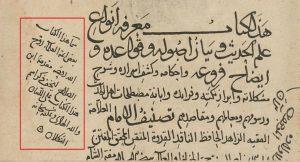
Date of the Manuscript
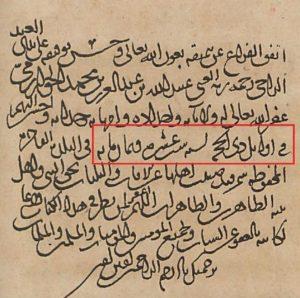
This proves that the book was referred to as Muqaddimah Ibn aṣ-Ṣalāḥ from hardly two centuries after the author wrote the book.
Dr Muwaffiq ibn ‘Abdillah writes of two earlier examples:
هـ. أما ما جاء عن أرجوزة قاضي القضاة شهاب الدين أبي عبد الله محمد بن أحمد بن أحمد بن خليل الخويي المتوفى سنة (693هـ)، والمسماة بـ” أقصى الأمل والسول في أحاديث الرسول “، والموجود منها نسخة في دار الكتب المصرية تحت رقم (256) مصطلح حديث من القول: ((هي أرجوزة نظم فيها مقدمة ابن الصلاح)) (2)، فهذا القول قاله مؤلف كتاب ” فهرست المخطوطات ” لدار الكتب المصرية.
و. وكذا ما جاء في تسمية كتاب قاضي القضاة محمد بن إبراهيم ابن جماعة المتوفى سنة (733هـ) “مختصر تلخيص مقدمة ابن الصلاح في معرفة أنواع علوم الحديث” الموجودة في دار الكتب المصرية تحت رقم (352) مصطلح حديث فإن هذه التسمية هي تسمية النساخ وصانعو فهرست دار الكتب المصرية (3). وأن اسم الكتاب هو “المنهل. (توثيق النصوص وضبطها عن المحدِّثين107 – وعنه ماهر الفحل والهميم في طبعتهما – ص: 56)
Another example of reference to this book as Muqaddimah is in the commentary of Mullā ‘Alī (d. 1014)
لكن ترجح جانب الحذف بقرينة دالة على الوهم كما ذكره ابن الصلاح في ” المقدمة ” (شرح شرح نخبة الفطر للقاري – ص: 479)
In light of all the above, it is fine to refer to this book as: Muqaddimah Ibn aṣ-Ṣalāḥ.
Reason Why It is Called a Muqaddimah
Shaykh ‘Abd al-Fattāḥ Abū Ghuddah explained that this was due to the author teaching and writing this book on the principles, when he was teaching as-Sunan al-Kubrā. He wrote:
اشتهر كتاب ابن الصلاح باسم “المقدمة”، لأنه ألفه أثناء قرائته كتاب السنن الكبرى للإمام البيهقي ، في دار الحديث الأشرفية بدمشق. فكان مقدما لدراسة السنن الكبرى وتحديثه به وتلقيه عنه رحمه الله تعالى (تعليقة على ظفر الأماني- ص: 558)
Considering this and noting that it was soon after the author’s demise that people were referring to this as Muqaddimah, it will not be far-fetched to assume that the period in which this book was taught was probably referred to by the students as Muqaddimah.
Alternatively, students of Ḥadīth may have realized that this is an ‘introduction’ for those who really want to benefit from the books of Mutūn al-Ḥadīth. Hence, the name.
Status of The Book
It is no exaggeration to say that after ‘Allāmah Ibn aṣ-Ṣalāḥ, no one can become a Muḥaddith without referring to this kitāb. Hence, we see that for centuries after his demise, in library catalogues and the booklists of shop owners, there is testimony that there was always a market for a commentary or synopsis – there was just continuous demand for the book. Many senior muḥaddithūn and numerous scholars in the field put their focus and complete attention on this kitāb.
وكفى بهذا فضلا.
Muḥammad Muḥyī al-Dīn ʿAbd al-Ḥamīd which he mentions in his Muqaddamah of the book Tawḍīḥ al-Afkār:
ولو لم يكن من حظوة هذا الكتاب الا ان يتصدى له الإمام النووي وابن كثير وابن جماعة والزركشي والعراقي وابن حجر: حفاظ أزمانهم. ثم لو لم يكن له حظوة إلا أن يتفرغ له الحافظ العراقي الزمن الطويل….. لو لم يكن من الحظوة إلا ذلك لكان كافيا ودليلا مع ذلك على منزلة الكتاب ومنزلة صاحبه.
“If there was no other merit of this book except that great scholars like Imān an-Nawawī, Ibn Kathīr, Ibn Jamāʿah, Zarkashī, ʿIrāqī and Ibn Ḥajar, the Ḥuffāḍh of their eras, applied themselves to it, then, if there was no other merit besides the fact that Ḥāfiḍh ʿIrāqī dedicated a long time to this, if there was no other merit besides these, it would be sufficient to explain to us how great this Kitāb is and the great status of the author.”
Objection
Some scholars criticize him and say that the order and sequence of the book is not quite good.
Answer
Firstly, the duty and objective of the author was to gather the applicable information from the different sources in which they were gathered in. As he would find something, to the best of his ability, he would place it in an appropriate section of the book. However, that was not an era of Microsoft Word, where a person can simply type or paste something at any place of the document with absolute ease. Rather, at that time, they did not even have our modern day books. Hence to constantly add data at selected places within the books of their time would have been a rather difficult task.
Secondly, the book was based on the lectures he gave. If a person is writing a kitāb then it is easier for him to consider the sequence and order, whereas this is not the case of a verbal lecture. ‘Allāmah Ibn aṣ-Ṣalāḥ was giving these in durūs over a period of 4 years (from 630 AH to 634 AH).
Despite these odds against him, honestly, the order is not that bad, such that it would create confusion or prevent one from benefitting. Rather, the chapters do blend in well with each other, and it is just an odd topic here and there which might not be in the best place.
Consider the mammoth task that he completed and the great work that he accomplished by gathering the points, analysing them, grouping things together, coining new terms etc, the small slip-up of not putting something at the right place should surely be overlooked.
PRINTS
As for the best print of the kitāb, people will have different views, due to the amount of publications, the calibre of the editors, and the manuscripts at their disposal.
Some people would acknowledge that generally Dār al-Kutub al-Ilmiyyah (DKI) are notorious for their typos and weak prints, but both their publications of this book were conducted in an excellent manner. They published the book twice:
1) In 2002, with the taḥqīq of Shaykh Māhir al-Fahl.
2) In 2021, with the taḥqīq of Ṣalāḥ ibn Muḥammad
Admittedly, both these prints are good.
Others prefer the print of Shaykh Muḥammad Maḥmūd al-Shaʿbānī which is printed by Darul Baṣā’ir.
Many scholars still prefer the copy of Shaykhah ‘Āisha Bint ash-Ṣhāṭī.
From the scholars who I have been exposed to, they all mostly prefer the (third) edition of Shaykh Nūr al-Dīn ʿIṭr print. Besides the 2 or 3 incorrect I’rāb errors, everything is typed accurately, and he followed the traditional method of highlighting the differences of the manuscripts (he does not put ‘I’rabs, but on those few occasions when he did, there are mistakes)
Undoubtedly, all of these are excellent copies, and the differences are very few, minor and even subtle.
You are most welcome to get any of these prints. I prefer the print of Shaykh Nūr al-Dīn ʿIṭr, but it must be the third print. Each individual has his own taste.
Manuscripts that Shaykh Nūr ad-Dīn ‘Itr used
Shaykh Nūr al-Dīn ʿIṭr used the three of the most reliable manuscripts – the manuscripts of:
1. Abū ʿAlī ibn Ibrāhīm al-Wasafi – copied most of his notes directly from the script of Ibn aṣ-Ṣalāḥ. Then he even read it back to Ibn aṣ-Ṣalāḥ, and had him sign it just one and a half years before Ibn aṣ-Ṣalāḥ, in 641 AH. So obviously this is the greatest and best nuskhah.
2. Shaykh Najm al-Dīn Muḥammad ibn Muḥammad ibn al-Bāhī al-Ḥanbalī. He recited and corrected his copy with Taqī al-Dīn al-Dijwī and ʿAllāmah ʿIrāqī he completed his reciting to Shaykh al-Dijwi in 808AH and ʿAllāmah ʿIrāqī in 798AH. This is stored in Madīnah Munawwarah.
3. The third was read to the son of ʿAllāmah ʿIrāqī, Shaykh Aḥmad ʿIrāqī, it was completed in the year 814 AH.
For our lessons, we will, in shā Allāh, use the copy of Shaykh Nūr al-Dīn ʿIṭr, but if one were to use any of the aforementioned prints, he would be able to easily and seamlessly follow along, since the text would appear the same 99.9% of the time.
May Allāh Taʿālā have mercy on them all.
سبحانك اللهم وبحمدك ، أشهد أن لا إله إلا أنت ، أستغفرك وأتوب إليك
(1) He commenced writing a book on the Ṭabaqāt of Shāfi’ī Fuqahā. He had hardly completed a few scattered pages, when he passed away. Imām Nawawī gathered those and completed it into one volume. ‘Allāmah Mizzī then completed the book in its entirety. In this manner, this book is the fruit of these three scholars

